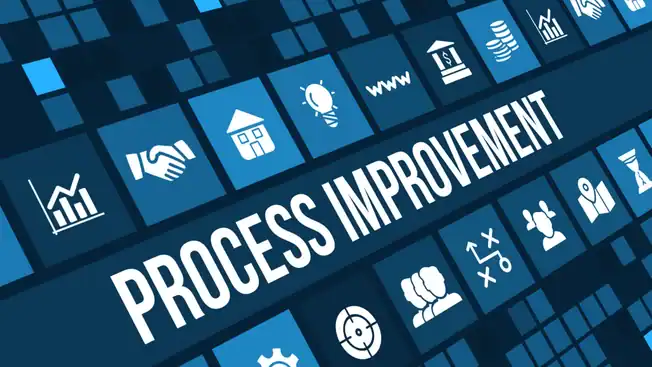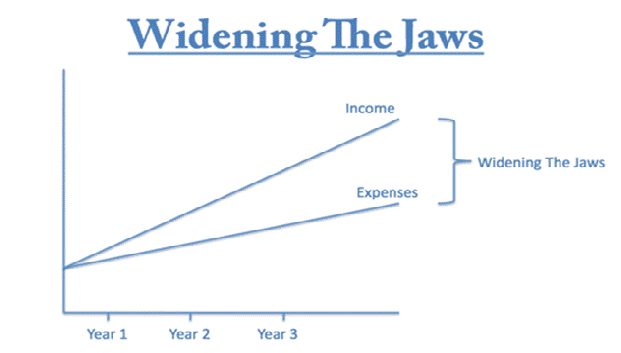
Price improvement: Have you ever joined a company and thought “We are doing such great work here and producing so many valuable products, but why are we struggling to improve the return on invested capital?”
>Download Now: Free PDF Future Proof Your Pricing Strategy
If yes, then you are not alone. Taylor Wells observes countless B2B industrial businesses in Australia are boosting productivity, landing new accounts, and making shrewd acquisitions, even in the face of a ongoing manufacturing collapse. Yet so many of these businesses are still failing to measure up to the value they actually produce for their customers and some are even struggling to break even.
Capability Building Programmes For Pricing & Sales Teams!
Many of these businesses have found themselves in a profit-margin rut:
No matter how much businesses innovate and improve products and services, they still end up charging the same premium for it as they would for a more standard item. Some automatically cut costs when they find a less expensive way to make a product due to cost, plus thinking and not being able to price intelligently.
The sales team may end up discounting to win customers and the business soon finds itself in the jaws of death situation.
Taylor Wells believes this profit rut is largely down to an entrenched commodity mindset.

Unfortunately, fixing up a commodity mindset situation can take up to 2 – 3 years as staff work their way through the company transformation process. In all of this time, margin can still be lost if the right price improvement practices are not implemented.
Understanding Price Improvement
Understanding price improvement is pivotal for businesses seeking to enhance their profitability and market standing. Price improvement, in essence, refers to the strategic enhancement of product or service pricing to achieve better financial outcomes. It’s a dynamic process that demands astute decision-making and responsiveness to market trends.
One key aspect of comprehending price improvement involves recognising the various contexts in which it can be applied. In retail, for instance, businesses can implement price improvement strategies to attract more customers and outshine competitors. Consider a scenario where a small boutique adjusts its pricing strategy by offering limited-time discounts or bundle deals – this can result in increased foot traffic and heightened sales.
Similarly, in investments, understanding price improvement is crucial for traders aiming to optimise their returns. Employing smart trading strategies, such as limit orders or market timing, can contribute to achieving price improvement in stock transactions. For instance, by strategically placing a limit order to buy a stock at a lower price, an investor can capitalise on market fluctuations and secure a more favourable deal.
In the real estate sector, homeowners can explore renovations and home improvements as a means of achieving price improvement. Upgrading the kitchen or adding energy-efficient features enhances the property’s value and positions it favourably in the market. Picture a homeowner who invests in solar panels – this not only aligns with sustainability trends but also contributes to long-term price improvement by reducing energy costs.
In essence, understanding price improvement involves a holistic approach that considers market dynamics, customer behaviour, and strategic decision-making. By adopting pricing strategies in response to market demands, businesses and individuals can navigate the competitive landscape successfully, ultimately leading to improved financial outcomes and sustained growth.
Price improvement: What to do
A culture of pricing excellence can however accelerate earnings growth and eliminate the frustrations of sales marketing and finance.
With the right price improvement capability, a clearer link between customer value and sell price can be generated to drive margin expansion outcomes.
In fact, price advice shows you can generate an additional 2.0-7.0% points of gross margin annually by implementing the right price improvement strategy.
Sounds simple enough. Yet, why don’t more businesses do it?
Introduction to Price Optimisation 💰 Podcast Ep. 74!
The problem
Here’s the hard part: It requires a complete mindset change – unlearning old pricing improvement habits and practices like cost-plus and trialling new, more scientific price improvement methods and analytics.
4 Myths Stopping Price Improvement Strategies
Listed below are four pricing myths that Taylor Wells feel continue to kill price improvement programs in major ASX-listed and Fortune 500 business. Destroy these myths and you’ll remove the main obstacles holding you and your business back from substantial profit improvement and value-based thinking.
MISCONCEPTION #1: “It’s too early to begin thinking about price improvement or creating pricing roles in the business.”
It’s never too early. Changing how you set prices is usually inevitable if you’re operating in highly competitive and disrupted markets, so you’ll need to figure out how you stand.
Delaying the team setup and integration process will only serve to lengthen the coming together of different departments’ people, processes, and systems, and reduce the amount of time you have to improve your pricing and solve complex price improvement challenges.
MISCONCEPTION #2: “We’ll delegate price improvement tasks internally. Then, let’s wait and see what happens before we invest resources in pricing.”
Price improvement is not a set-and-forget exercise. Price improvement is a continual improvement process. It can be a costly mistake to think of price improvement as a discrete task with a clear completion date. It can also be a costly mistake to assign price improvement tasks to people with little to no dedicated pricing experience or skills.
We have seen a number of CEOs delegate pricing tasks to high-performing sales and finance people or part-time project teams only to experience poor outcomes and even margin loss.
Return on investment is extremely low when implementation is not driven by a foundation of expertise.
Well-meaning, but inexperienced teams can often implement price rise strategies that actually create strained relations with customers resulting in credit notes and discounting.
The real issue is the cost of inaction, misdirection, and even incompetence.
Pricing Recruitment For Pricing Managers!
MISCONCEPTION #3: “If we do decide to set up a new pricing team, we’ll ease the changes in slowly.”
Slow team setup and integration only increase the depth and duration of the inevitable productivity drop. Fast integration — at a prudent speed — protects productivity.
However, a poor team setup and integration process are only part of the problem. Our research indicates that misdiagnosis of the issues and opportunities available to your business during the pre-integration phase is equally to blame – i.e., identifying your current pricing situation and exactly what internal price management changes you need to make to improve your pricing.
MISCONCEPTION #4: “Pricing and accountancy are pretty much the same things! Why do we need a pricing team when we have people in finance that can do it?”
No matter how similar two functions may appear to be at face value, there are always differences in leadership, strategy, structures, operations, styles, and capabilities.
Pricing and revenue management is a unique functional area drawing upon sales, marketing, finance, and fundamental pricing principles and price improvement methods.
Price improvement is not just cost plus a markup or cost accounting. Next-generation price improvement, Customer Focused Pricing (CFP) relies on a suite of advanced price improvement methods, analytics, and approaches – very different from commercial finance’s P&L cost and profitability focus.
Two additional misconceptions
MISCONCEPTION #5: ”We won’t need to tell the sales team anything about changing or improving our pricing until the time is right.”
The old thinking is that so much is going on in the business that changes to pricing should not be discussed with sales.
Leaders often want to avoid territorial disputes about who owns pricing before it is absolutely necessary.
However, the probability of a successful price improvement program goes up considerably when all pricing and sales elements are considered at the very beginning of the process, including likely risks, challenges, and objections.
Sales are an important part of the value discovery process, and their input and support can help to shape the role, mission and structure of the new pricing team – no matter how challenging their objections, questions or concerns.]
MISCONCEPTION #6: “Once the pricing team is on board, they can take off the price improvement program from there.”
Nothing is further from the truth. In fact, this is where the change and integration piece really kicks in. To ensure that the pricing function is set up to succeed post-integration, you want to link the team and price improvement program closely with sales, and other key departments in the business.
Typically, companies want to set up a “transition team” to maintain urgency and momentum post-integration—a temporary but formal group of business leaders, task forces, and teams charged with working with the pricing function to realise the expected outcomes and monitor price improvement progress.
Strategies For Price Improvement
Implementing effective strategies for price improvement is essential for businesses aiming to optimise their revenue streams and stay competitive in the market. Let’s delve into some practical approaches that can make a significant impact.
Firstly, businesses can consider adopting dynamic pricing strategies. This involves adjusting prices based on factors such as demand, competitor pricing, and market trends. For instance, during peak seasons, a hotel might increase room rates to capitalise on high demand, demonstrating a dynamic approach to price improvement.
Another key strategy is bundling products or services.
By offering related items together at a slightly discounted price, businesses can encourage customers to make larger purchases, thus improving overall revenue. Imagine a software company bundling its basic and premium packages – this not only provides customers with options but also strategically boosts the company’s average transaction value.
Discounts and promotions are classic yet effective tactics for price improvement. Limited-time offers, seasonal discounts or loyalty programs can incentivise customers to make purchases promptly. Consider a retail store offering a “buy one, get one free” promotion – this not only attracts customers but also helps clear inventory, leading to both short-term and long-term price improvement.
Furthermore, businesses can explore value-based pricing, where the price is determined by the perceived value of the product or service. This requires a keen understanding of customer needs and preferences. For instance, a high-end electronics manufacturer might price its products higher, leveraging the perceived quality and advanced features to justify the cost and achieve price improvement.
Therefore, implementing diverse strategies for price improvement is a dynamic process that involves thoughtful analysis and adaptation to market conditions. By embracing dynamic pricing, bundling, discounts, and value-based approaches, businesses can enhance their pricing models strategically, ultimately leading to improved financial performance and sustained growth.
〉〉〉 Get Your FREE Pricing Audit 〉〉〉
Human resources are important to functional integration, and they play a crucial role in facilitating cross-functional collaboration and accountability for achieving agreed revenue and margin targets.
Bottom Line
When businesses assume they have pricing capability (when there may, in fact, be vital skills gaps) or pursue the wrong changes or tackle them in the wrong order, they exacerbate existing pricing problems and create new ones.
Employees having been burned, or sales teams sensitive to being blamed for pricing mistakes, become wary of future price improvement initiatives. Before integrating a pricing function within your business, leaders should analyse three things very carefully during initial price improvement planning:
1. the reason for changing pricing in the first place,
2. the underlying journey involved price improvement,
3. and the pricing capabilities required to pursue the end goal.
The team setup and integration process should help you broaden your scope – it’s not just about separate processes.
The process can help you establish a strong vision for change for teams to believe in. The team setup and integration process can be a great way for teams to stop thinking in silos and start working together to ask and solve difficult questions and challenges.
The return on investment in a price improvement program is usually 5:1 or better. The real issue is the opportunity cost of lost margin through inaction or misdirection.
Taylor Wells wrote this article to help you better understand the underlying journey involved in price improvement programs.
For a comprehensive view and marketing research on integrating a high-performing capability team in your company, download a complimentary whitepaper on Future Proof Your Pricing Strategy.
Are you a business in need of help aligning your pricing strategy, people and operations to deliver an immediate impact on profit?
If so, please call (+61) 2 9000 1115.
You can also email us at team@taylorwells.com.au if you have any further questions.
Make your pricing world-class!

